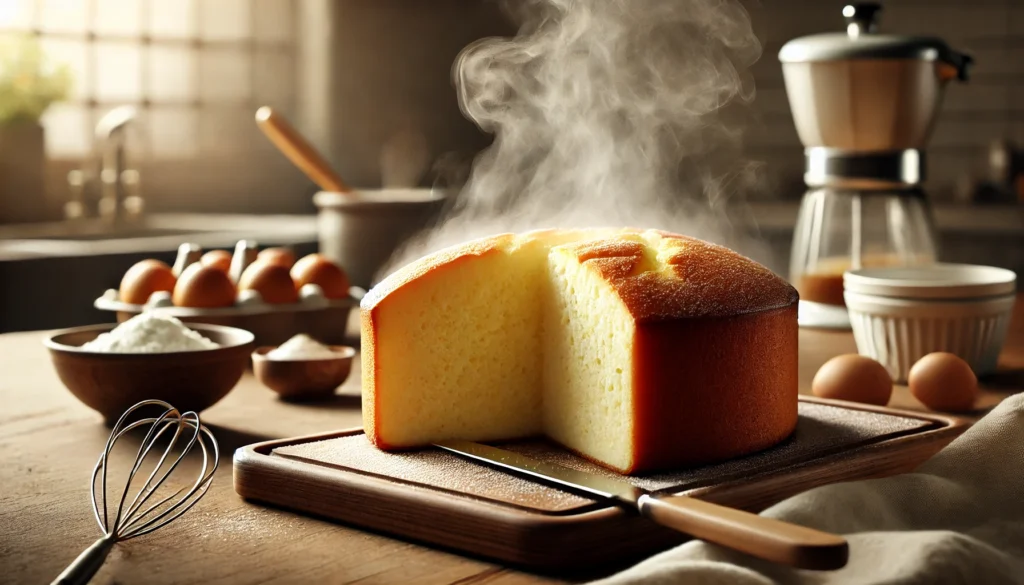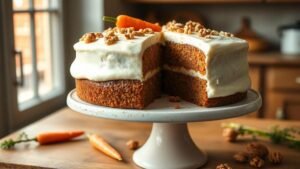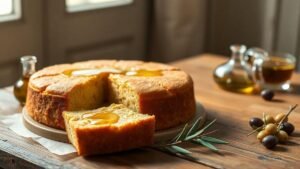When it comes to comfort food, few things compare to the pleasure of biting into a perfectly fluffy cake. Whether it’s a simple vanilla sponge or a rich chocolate delight, a soft and airy cake can turn an ordinary day into something special. But how do you get that perfect, melt-in-your-mouth texture at home—without being a professional baker?
In this article, you’ll learn practical, step-by-step tips on how to make your cakes incredibly fluffy, moist, and delicious.
Choose the Right Flour for a Tender Texture
One of the first steps to a fluffy cake is using the correct flour. Cake flour is the top choice because it has a lower protein content than all-purpose flour, resulting in a finer crumb and lighter texture. If you only have all-purpose flour, you can make a substitute by replacing 2 tablespoons of each cup of all-purpose flour with cornstarch.
Quick Tip: Sift the flour once or twice before adding it to the batter. This aerates the flour, helping create a fluffier cake.
Use Room Temperature Ingredients
Ingredients like eggs, butter, and milk blend more smoothly when they’re at room temperature. Cold ingredients can cause the batter to curdle or not mix evenly, which impacts the texture of the cake.
- Take out the eggs and butter at least 30–60 minutes before you start baking.
- If you forget, you can quickly warm eggs by placing them (in shell) in warm water for 5–10 minutes.
Cream the Butter and Sugar Properly
One of the most essential techniques in baking fluffy cakes is the creaming method. This process incorporates air into the batter, giving your cake a lighter structure.
- Use an electric mixer to beat the butter and sugar for at least 5 minutes, until the mixture turns pale and fluffy.
- Don’t rush this step. The more air you incorporate here, the lighter your cake will be.
Pro Tip: Use superfine sugar if possible. It blends more easily with the butter and creates a smoother batter.
Don’t Overmix the Batter
Once you start adding the dry ingredients and liquids to the creamed mixture, be gentle. Overmixing can activate the gluten in the flour, making the cake dense and rubbery.
- Fold ingredients using a spatula or mix on low speed just until combined.
- Stop as soon as you no longer see dry flour in the bowl.
Whip Egg Whites Separately for Extra Lightness
If you’re baking a sponge cake or chiffon-style cake, separating the eggs and whipping the whites can significantly improve the cake’s fluffiness.
- Whip egg whites until they form soft peaks and gently fold them into the batter as the last step.
- This adds volume and gives the cake a cloud-like texture.
Extra Tip: Add a pinch of cream of tartar or a few drops of lemon juice when whipping the egg whites to stabilize them.
Don’t Skip the Leavening Agents
Baking powder and baking soda are crucial for lift. Make sure:
- You’re using fresh leavening agents (replace them every 6 months).
- You’re using the right amount—too much can cause the cake to rise fast and then collapse; too little leads to a dense cake.
Typically, use 1 teaspoon of baking powder per cup of flour, but always check your recipe.
Bake at the Right Temperature
Baking your cake at the right temperature ensures even rising and prevents it from becoming dry.
- Preheat your oven for at least 10–15 minutes before baking.
- Use an oven thermometer to double-check your oven’s accuracy—many ovens are off by 10–20 degrees.
Standard temp for cakes: 325°F to 350°F (160°C to 175°C)
Use the Right Pan (And Prepare It Correctly)
Choose a light-colored, metal pan for even heat distribution. Dark pans absorb more heat, which can cause the cake to overbake on the edges.
- Grease the pan with butter or spray, and line the bottom with parchment paper to avoid sticking.
- Don’t overfill—only fill the pan two-thirds of the way to allow room for rising.
Don’t Open the Oven Door Too Early
As tempting as it is to check on your cake, opening the oven door before it’s set can cause it to sink.
- Wait until at least two-thirds of the baking time has passed before opening the door.
- Use a skewer or toothpick to test: if it comes out clean, your cake is ready.
Let the Cake Cool Properly
Cakes continue to cook slightly after being removed from the oven. Letting them cool properly prevents a soggy texture.
- Cool in the pan for 10–15 minutes, then remove and transfer to a wire rack.
- Avoid covering the cake while it’s still warm—this traps steam and makes the surface soggy.
Final Touches for Maximum Softness
Want your cake to be even more luscious? Try one of these methods:
- Soaking syrup: Brush the cake layers with a simple sugar syrup flavored with vanilla, citrus, or liqueurs.
- Frosting timing: Frost the cake once it’s fully cooled to preserve the fluffy texture and avoid melting the frosting.
Ready to Bake a Perfectly Fluffy Cake?
Mastering the art of a fluffy cake isn’t just about following a recipe—it’s about understanding the science and paying attention to small details. From choosing the right flour to mixing with care, each step plays a role in the final result.
Next time you bake, apply these tips, and you’ll see the difference. Whether you’re baking for a birthday, a cozy afternoon, or just because, your cake will be soft, airy, and impossible to resist.






